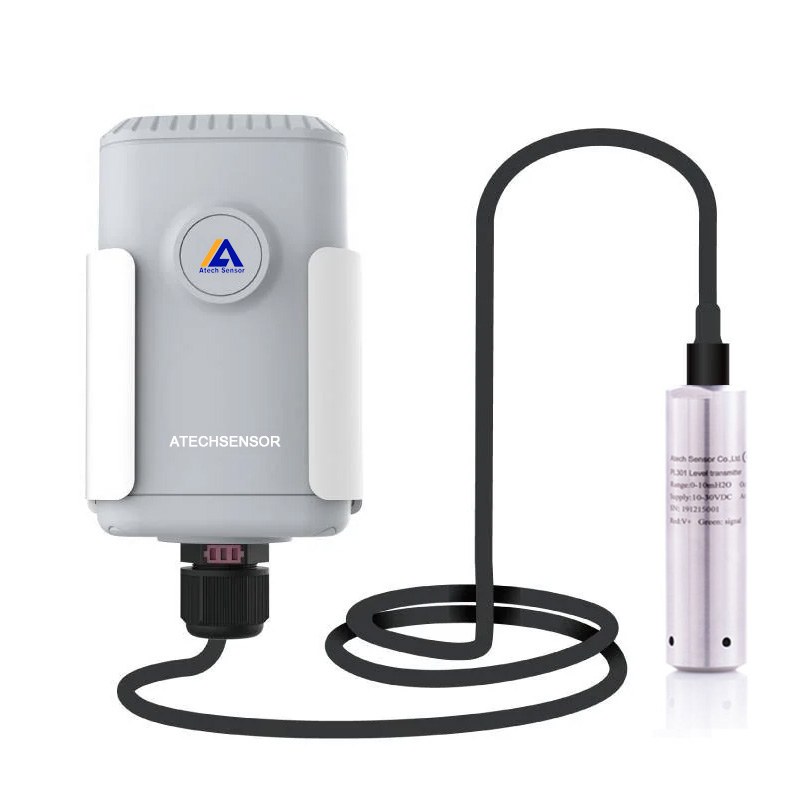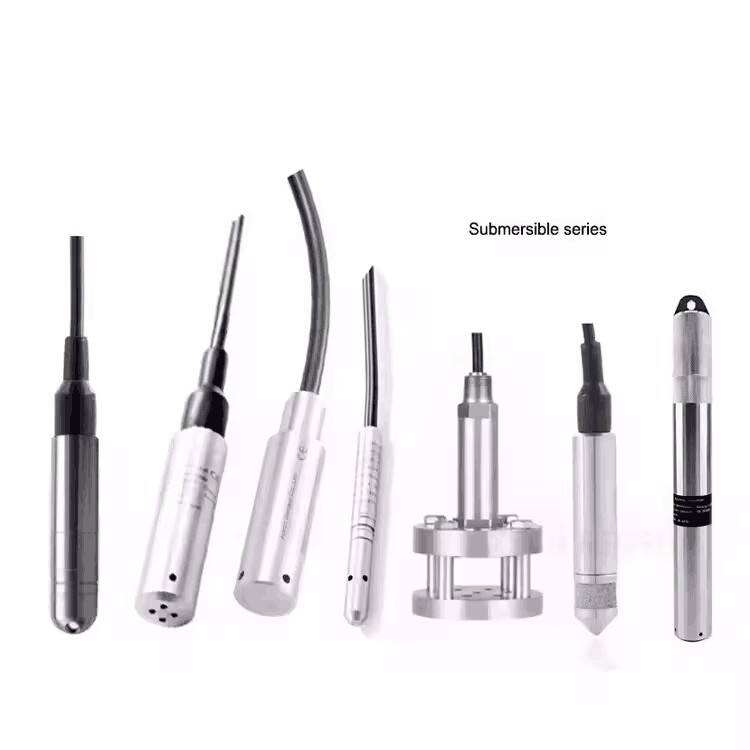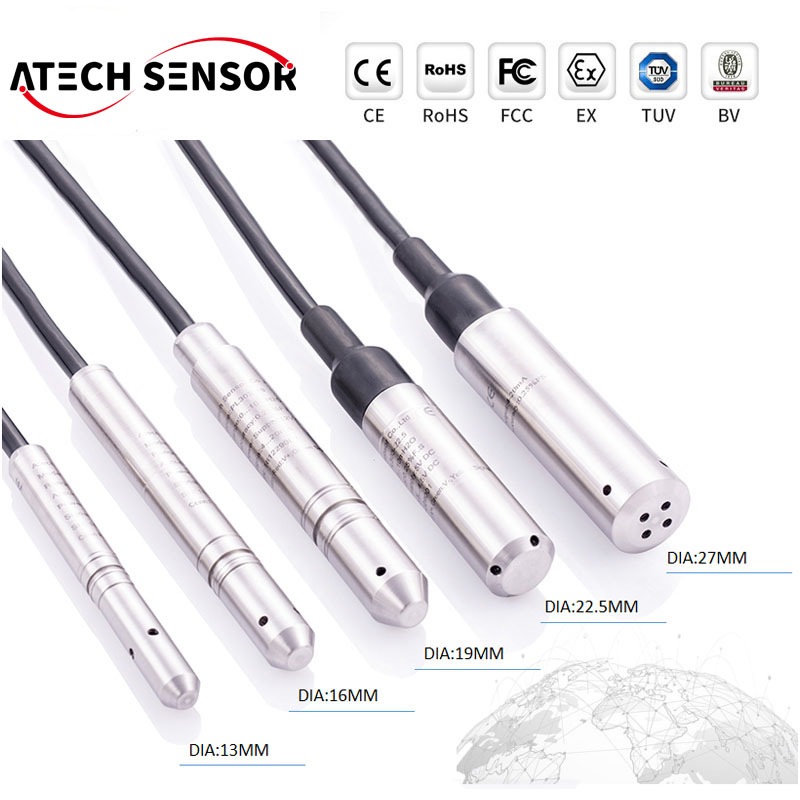1.Key Takeaways on Submersible Level Probes:
A submersible level probe (or submersible level sensor/submersible pressure transmitter) measures liquid levels using hydrostatic pressure while fully submerged.
It’s essential for applications like water management and oil storage, providing precise, reliable data.
The transmitter offers high precision, robust stainless steel construction, and a 2-year warranty.
Key features include advanced microprocessor technology, voltage surge protection, and SCADA system compatibility.
When choosing a sensor, consider factors like measurement range, material compatibility, and pressure rating for optimal efficiency.

2.What Is a Submersible Level Probe?
A submersible level probe is like the underwater eyes of a monitoring system, designed to measure liquid levels with precision even when fully submerged.
Unlike traditional sensors, it thrives in challenging environments, from deep wells to turbulent rivers. By detecting changes in hydrostatic pressure, it provides real-time data essential for preventing floods, optimizing chemical storage, or managing wastewater efficiently.
Also known as a submersible level sensor or submersible pressure transmitter, this versatile device ensures reliable performance across various liquid monitoring applications.
If you’re wondering why it has three different names, it’s because each highlights a specific aspect of its design or function. Let’s break it down:
Submersible Level Sensor highlights its role in measuring liquid levels underwater.
Submersible Level Probe emphasizes its probe-like shape for narrow spaces.
Submersible Pressure Transmitter focuses on how it measures hydrostatic pressure and transmits data.
3.Working principle of a Submersible level probe:
The level probe works on the principle of pressure measurement.
The measuring cell of the pressure sensor detects slight changes in hydrostatic pressure exerted on the cell, the pressure increasing or decreasing depending on the filling height of the fluid.
The acting pressure on the diaphragm is converted into an output electrical signal. The height of the fluid is directly proportional to pressure and, hence, level measurement.
4.Applications:
Submersible level probes are versatile tools used in a wide range of environments, ensuring precise and reliable level measurement. They are commonly used in:
Tanks and Vessels: To monitor liquid levels for industrial processes.
Lakes and Rivers: Providing continuous and accurate measurements, even with fluctuating water levels due to seasonal changes, essential for flood prevention and water resource management.
Lift Stations and Water Wells: Ideal for monitoring groundwater levels or wastewater flow.
Oil Storage Facilities: Favored for their durability in high-pressure, corrosive environments, ensuring safe and reliable readings of volatile or hazardous fluids.
Water, Wastewater, and Chemical Applications: Their robust construction handles various liquid properties, including corrosive or foamy substances, making them indispensable for efficient and safe liquid management.

5.Key Benefits:
Submersible level probe transmitters have several unique features designed for reliable performance and long-term stability:
Most advanced microprocessor technology with linear error compensation and temperature error compensation to assure the highest accuracy
Full potting probe, condensation-preventing technology
Dual-seal design and full welding technology with solid stainless steel body to assure long-term stability and permanent air tightness
Voltage surge protection: Built-in protection safeguards the sensor from electrical spikes, making it ideal for unpredictable field conditions.
Cone plug sealing design to ensure a long working life even under large mechanical load conditions
6.Maintenance of Submersible Level Sensors:
Maintaining the submersible level sensors is important to keep them functioning properly for accurate measurement. Follow these steps:
Keep the sensor clean: Regularly clean the sensor to remove dirt, debris, and other contaminants that can accumulate on the sensor over time and affect the accuracy. In sediment-rich environments, more frequent cleaning may be necessary.
Regular monitoring the operating environment as excessive exposure to chemicals or extreme temperatures can cause damage to the sensors.
Calibrate the sensor periodically, as per the manufacturer’s guidelines.
7.Why Do You Need a Submersible Level Probe?
Unlike traditional level sensors, submersible level probes are designed to withstand complete immersion in liquids, ensuring accurate and reliable measurements.
Before investing in any equipment, it’s essential to understand why you need it in the first place.
In the case of a submersible level transmitter, the primary purpose is to ensure accurate level measurements for efficient liquid management and control.
Whether you’re dealing with water, wastewater, or chemicals, having precise and real-time insights into the liquid levels is crucial for optimizing processes, preventing overflow or leakage, and ensuring operational safety.
8.Factors to consider before choosing any Submersible Level Probe:
8.1. Measurement Range and Accuracy
One of the most critical factors to consider is the measurement range and accuracy of the submersible-level transmitter. The measurement range should align with the maximum and minimum levels you need to monitor.
Additionally, the accuracy of the device determines the reliability of the data it provides. Look for transmitters with high accuracy, typically expressed as a percentage of full scale output.
8.2. Material of Construction
Since a submersible level transmitter will be in direct contact with the liquid, it’s important to consider its material of construction.
Different liquids may have varying corrosive properties, temperature ranges, and pressure conditions. Ensure that the transmitter is made of materials that can withstand the specific environment it will be submersed in.
8.3. Submersible Depth and Pressure Rating
The submersible depth and pressure rating of the transmitter should be appropriate for your application. If you require measurements in deepwater or high-pressure environments, ensure that the device is designed to withstand these conditions without compromising accuracy or performance.
8.4. Output Signal and Connectivity
Consider the output signal provided by the submersible level transmitter. Most commonly, these devices provide 4-20mA analogue signals or digital outputs.Choose a transmitter that is compatible with your existing control system or data acquisition system. Furthermore, check if it offers connectivity options such as wireless communication or Ethernet, allowing easy integration into your broader system.
8.5. Reliability and Longevity
Investing in a submersible level transmitter is a long-term commitment, so it’s crucial to select a reliable and durable device that will last.
Look for transmitters from reputable manufacturers with a track record of providing high-quality products. Additionally, consider the warranty offered and the availability of after-sales support and calibration services.

9.Where is Submersible measurement preferred?
A submersible probe is nothing more than a pressure sensor encapsulated in a way special so that liquid does not enter into the same, damaging the circuit of sense.
Submersible probes are used when it is not possible to place the level sensor by the side of the tank or container. There are applications where this is impossible, being a typical example of measuring levels in wells.
Submersible probes are ideal when side-mounted sensors aren’t an option, like in wells.
They provide a reliable way to measure liquid levels where external mounting isn’t feasible, ensuring accurate monitoring even in deep or confined spaces.
This makes them especially valuable for applications like groundwater management or chemical storage, where submersion is necessary for precise readings.
4 Advantages of Submersible water level sensors:
- Easy installation
- Simple structure
- Cost effective
- Reliable and robust
10.What are the advantages and disadvantages of pressure transmitters?
Pressure transmitters are efficient, reliable, and accurate.
Not only do they measure pressure levels and differential pressure, but they can also withstand a wide range of environments and can even be submerged.
Pressure transmitters can be connected to other systems, such as electrical circuits. They can also be calibrated to measure pressure relative to atmospheric pressure. On the downside, they can be costly.
Please note that one technology doesn’t fit all applications. If you’re not familiar with this process or not sure if this is the right sensor for you, it’s advisable to consult with a qualified technician or engineer to ensure proper installation & calibration.
11.Conclusion on submersible level sensors/transmitters:
A submersible level transmitter is a critical component in numerous industries where accurate liquid level measurement is necessary.
When purchasing such a device, it is essential to consider factors such as measurement range, accuracy, construction materials, submersible depth, output signal, and reliability.
By carefully evaluating these aspects, you can find a submersible level sensor/transmitter that meets your specific requirements and guarantees accurate and reliable liquid level monitoring.

